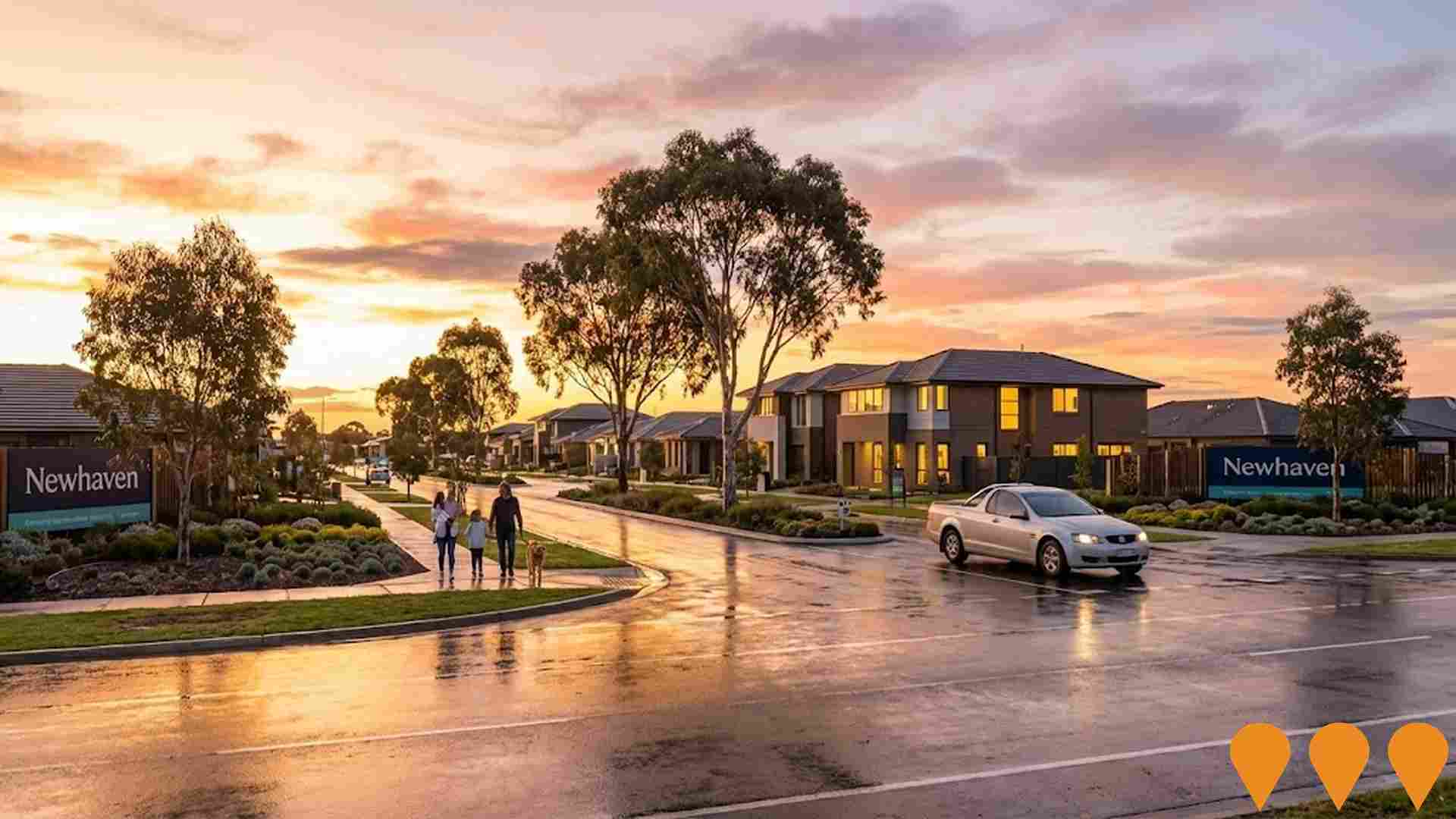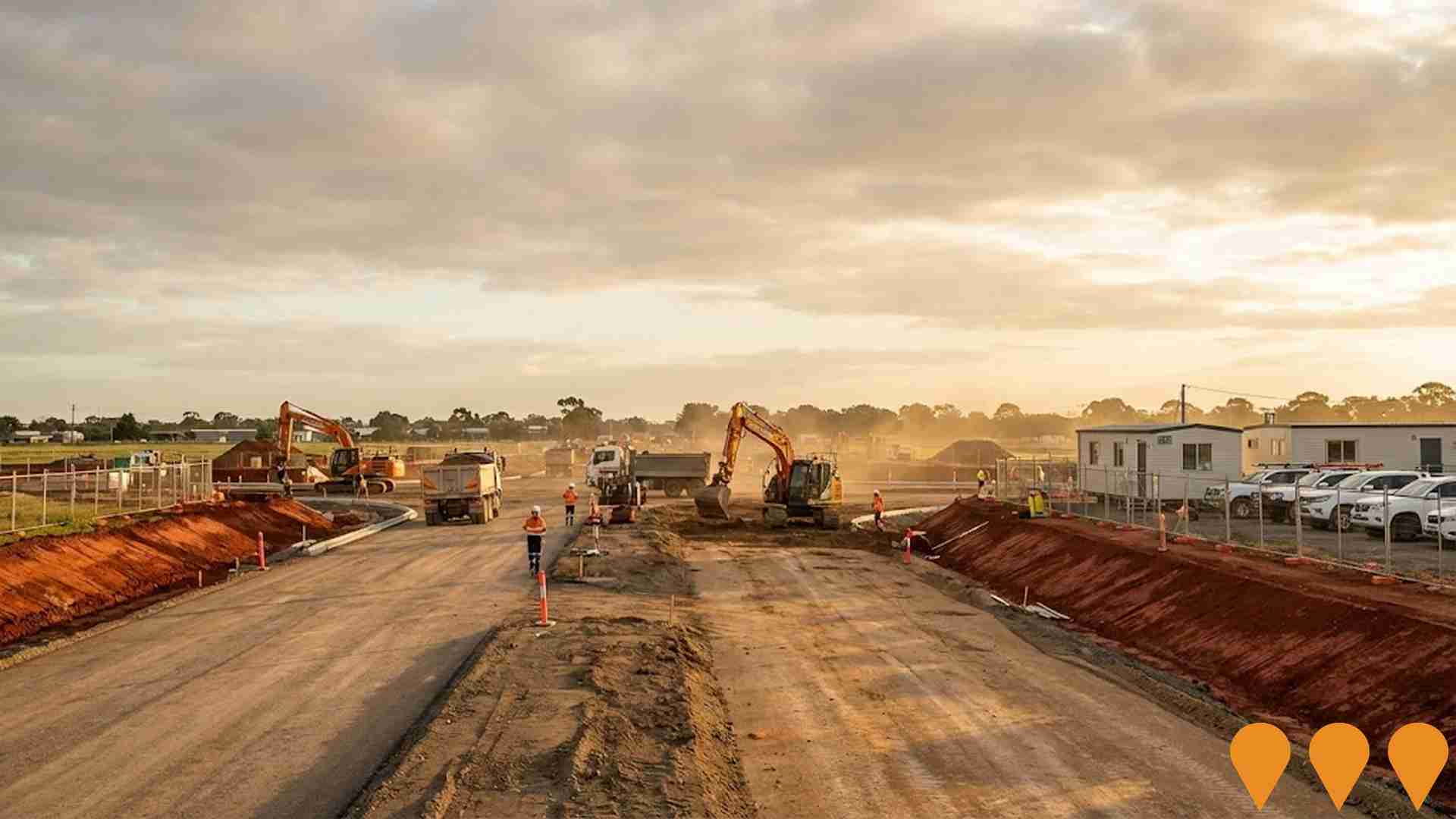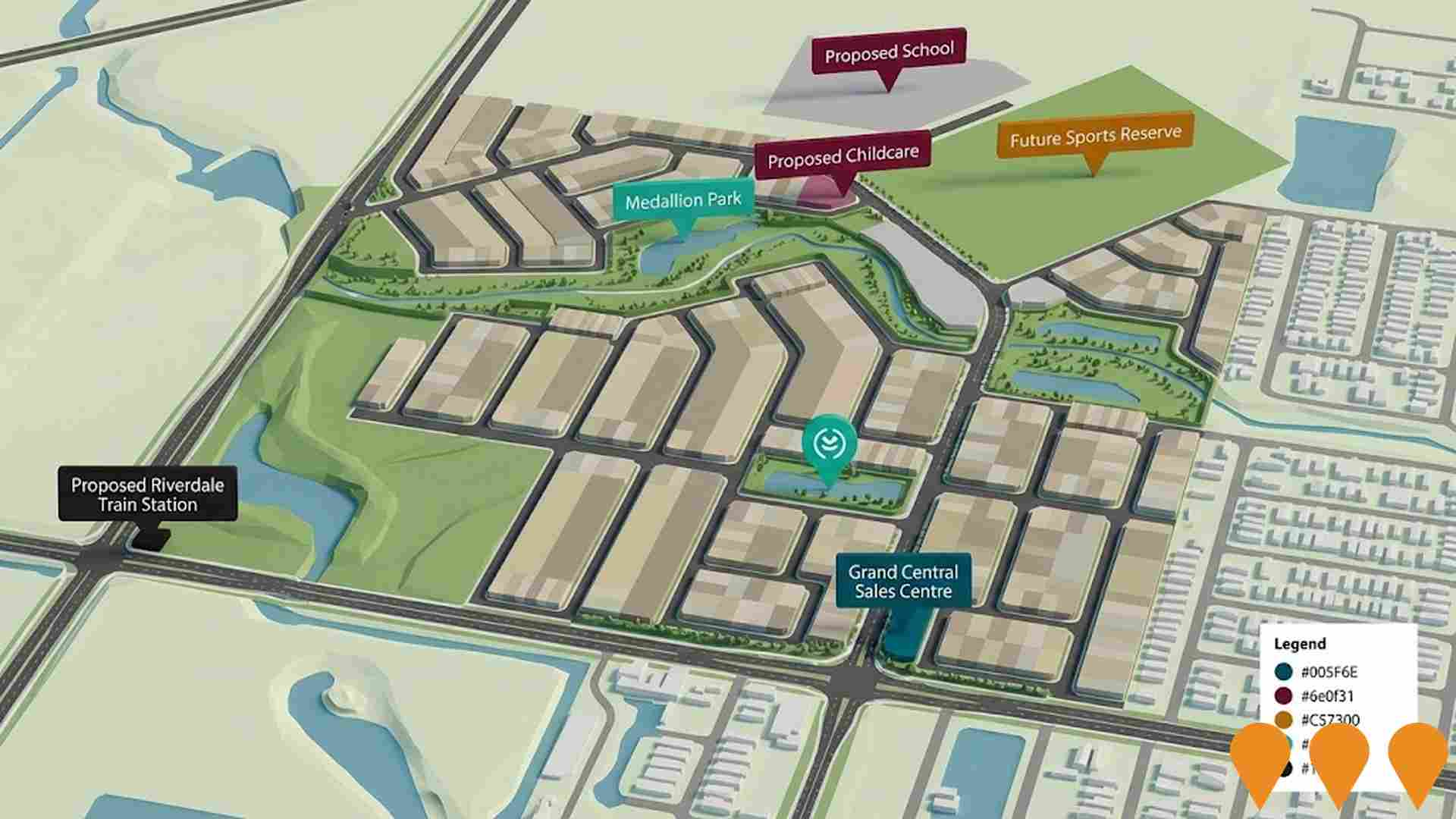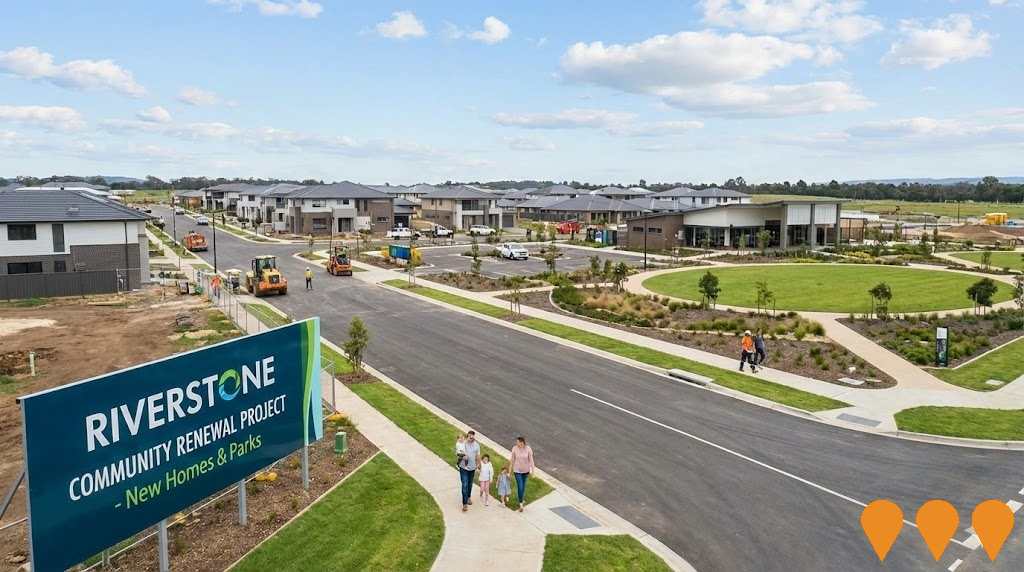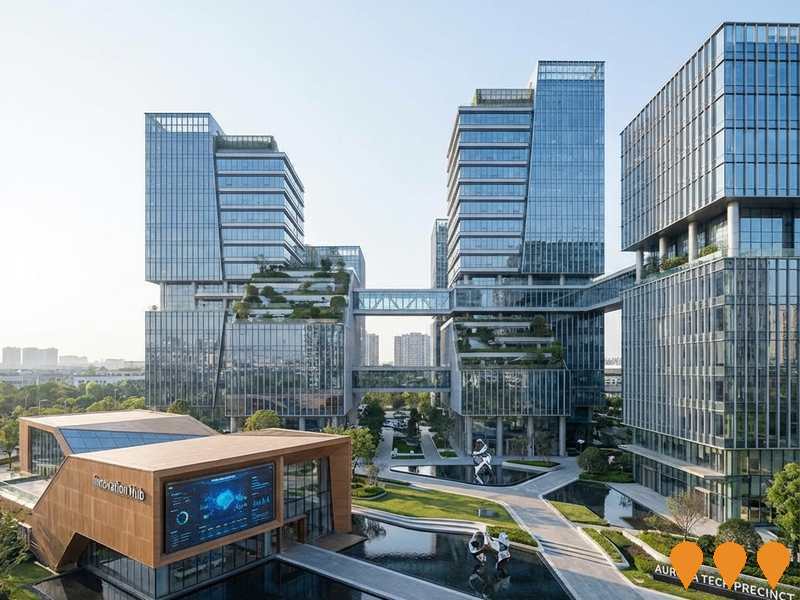Chart Color Schemes
est. as @ -- *
ABS ERP | -- people | --
2021 Census | -- people
Sales Activity
Curious about local property values? Filter the chart to assess the volume and appreciation (including resales) trends and regional comparisons, or scroll to the map below view this information at an individual property level.
Find a Recent Sale
Sales Detail
Population
Tarneit - North lies within the top quartile of areas nationally for population growth performance according to AreaSearch analysis of recent, and medium to long-term trends
Tarneit - North's population was approximately 15,318 as of August 2025. This figure represents an increase of 8,121 people since the 2021 Census, which reported a population of 7,197. The growth is inferred from ABS data showing an estimated resident population of 13,680 in June 2024 and an additional 3,051 validated new addresses since the Census date. This results in a population density ratio of 1,067 persons per square kilometer, similar to averages seen across other locations assessed by AreaSearch. Tarneit - North's growth rate of 112.8% since the 2021 census exceeded both national (8.6%) and state averages, marking it as a significant growth leader in the region. Interstate migration contributed approximately 81.4% of overall population gains during recent periods, although all drivers including natural growth and overseas migration were positive factors.
AreaSearch is adopting ABS/Geoscience Australia projections for each SA2 area, released in 2024 with 2022 as the base year. For areas not covered by this data, AreaSearch uses VIC State Government's Regional/LGA projections released in 2023, adjusted employing a method of weighted aggregation of population growth from LGA to SA2 levels. Growth rates by age group are applied across all areas for years 2032 to 2041. Population projections indicate exceptional growth, placing Tarneit - North in the top 10 percent of national statistical areas. By 2041, the area is expected to grow by 26,757 persons based on latest population numbers, reflecting an increase of 162.7% over the 17-year period.
Frequently Asked Questions - Population
Development
The level of residential development activity in Tarneit - North was found to be higher than 90% of real estate markets across the country
Tarneit - North has seen approximately 982 dwelling approvals annually. Between FY-21 and FY-25, around 4,910 homes were approved, with an additional 247 approved in FY-26 so far. On average, each dwelling constructed over these years accommodates about 1.9 new residents yearly.
This indicates a balanced supply and demand market, supporting stable conditions. The average construction cost of new properties is $348,000, which is below regional norms, offering more affordable housing options. In FY-26, commercial development approvals totalled $1.7 million, suggesting a primarily residential focus in Tarneit - North. Compared to Greater Melbourne, the area has 772.0% more development activity per person, providing ample choice for buyers despite recent slowing building activity. The national average is significantly lower, indicating strong developer interest.
Recent construction comprises 93.0% standalone homes and 7.0% medium to high-density housing, maintaining Tarneit - North's suburban identity with a concentration of family homes suited to space-seeking buyers. There are approximately 12 people per dwelling approval, suggesting an expanding market. Looking ahead, Tarneit - North is projected to grow by 24,924 residents by 2041. At current development rates, new housing supply should comfortably meet demand, offering good conditions for buyers and potentially supporting growth beyond current population projections.
Frequently Asked Questions - Development
Infrastructure
Tarneit - North has strong levels of nearby infrastructure activity, ranking in the top 40% nationally
Changes to local infrastructure significantly impact an area's performance. AreaSearch has identified 25 projects that may affect this region. Notable projects include Tarneit North Community Precinct, Wyndham Regional Stadium Precinct, Marigold Estate, and Truganina Employment Precinct. The following list details those most likely to be relevant.
Professional plan users can use the search below to filter and access additional projects.
INFRASTRUCTURE SEARCH
 Denotes AI-based impression for illustrative purposes only, not to be taken as definitive under any circumstances. Please follow links and conduct other investigations from the project's source for actual imagery. Developers and project owners wishing us to use original imagery please Contact Us and we will do so.
Denotes AI-based impression for illustrative purposes only, not to be taken as definitive under any circumstances. Please follow links and conduct other investigations from the project's source for actual imagery. Developers and project owners wishing us to use original imagery please Contact Us and we will do so.
Frequently Asked Questions - Infrastructure
Truganina Employment Precinct
The 662-hectare Truganina Employment Precinct in Melbourne's west is a major industrial and employment hub designed to deliver high-quality business park, logistics and advanced manufacturing facilities, expected to generate up to 25,000 jobs over the next 30+ years.
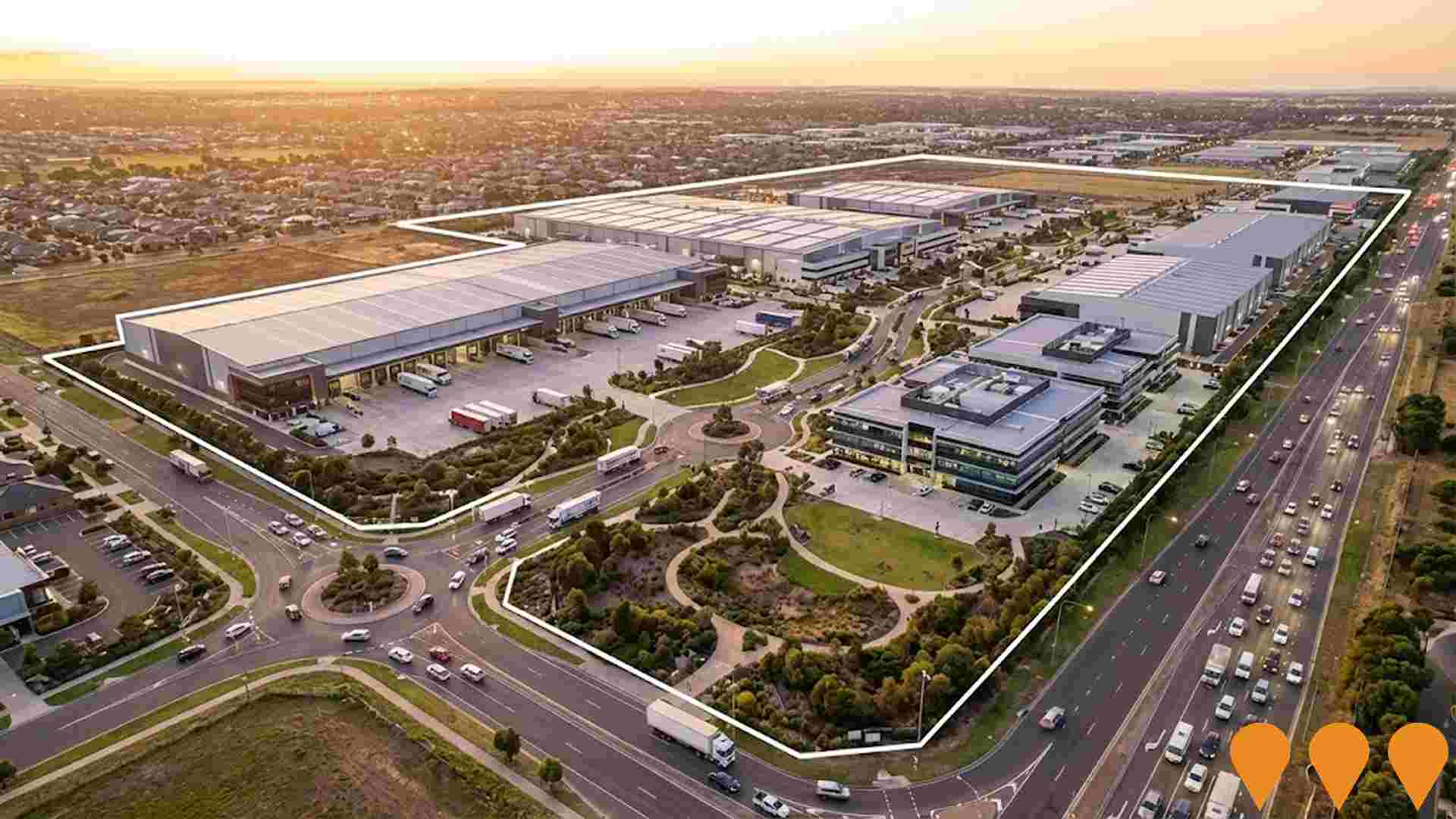
Riverdale Precinct Structure Plan
The Riverdale Precinct Structure Plan (PSP 1090) was approved in June 2023 and gazetted via Amendment GC213. It provides the planning framework for a new residential community in Tarneit supporting approximately 12,000 dwellings, 33,000 residents, two government schools, community facilities, employment land, and an extensive open space and integrated water management network.
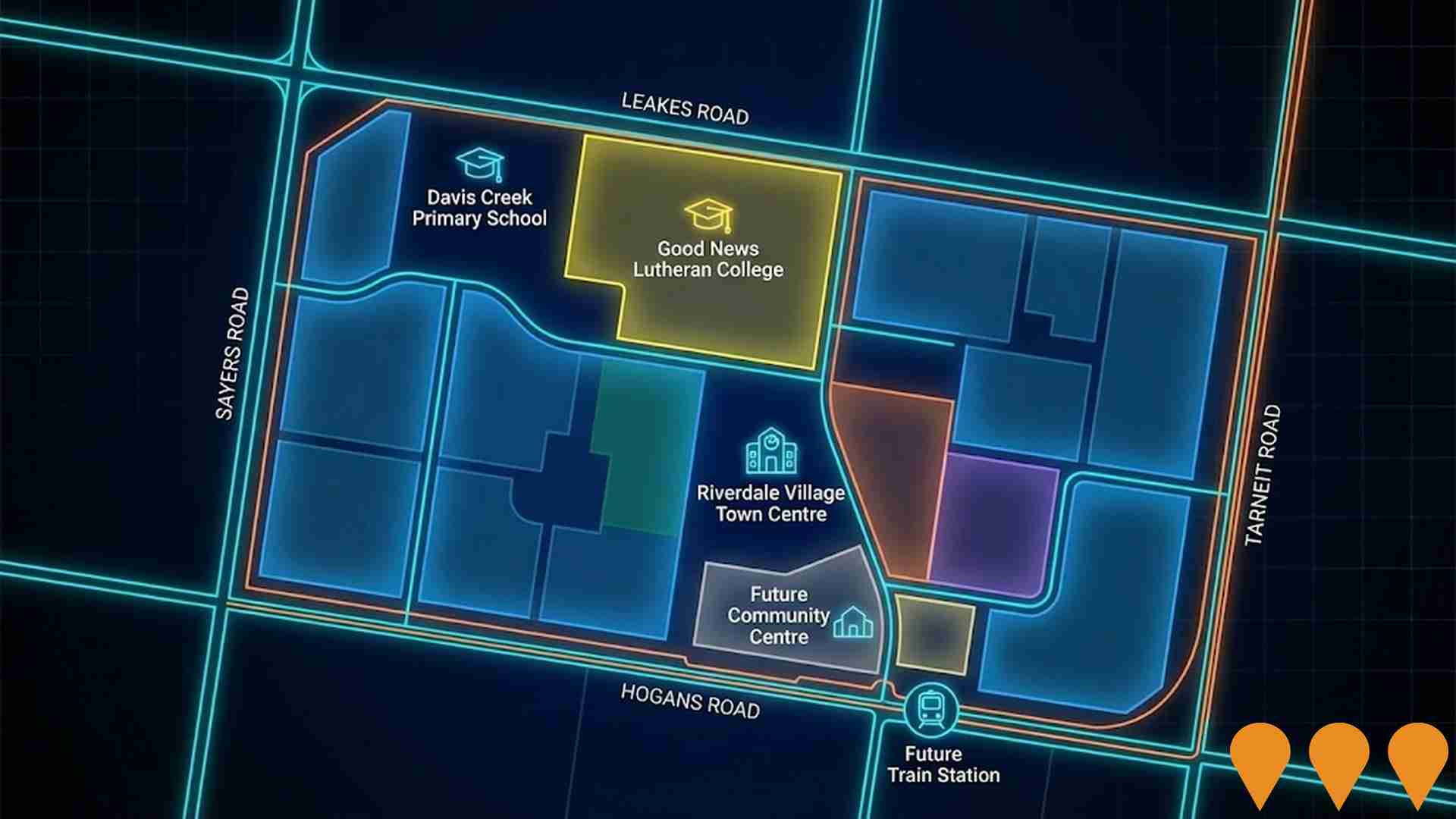
Tarneit North Precinct Structure Plan
The Tarneit North Precinct Structure Plan (PSP 146) was approved in September 2023 under Amendment GC222. It provides the framework for a new residential community supporting approximately 10,200 dwellings, 25,000 residents and up to 7,200 local jobs. The PSP includes two local town centres, employment precincts, multiple schools, community facilities, integrated open space and conservation areas for Growling Grass Frog and Natural Temperate Grassland.
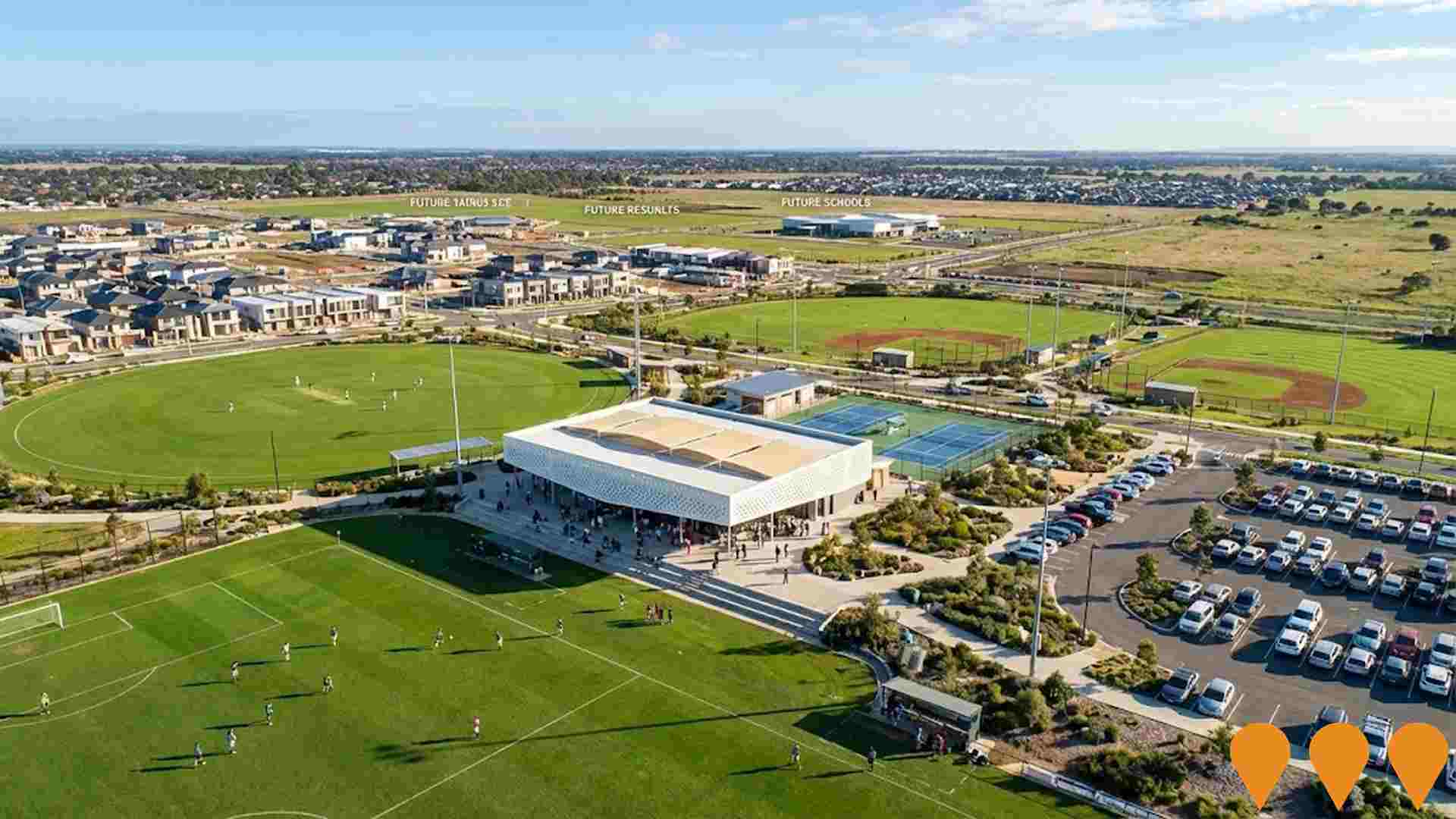
Tarneit North Community Precinct
The Tarneit North Community Precinct is a masterplanned development by Wyndham City Council providing community, health, educational, and recreational facilities for the growing Tarneit population. The Bembit Bag-rook Community Centre, completed in 2022, includes kindergarten, maternal child health services, and hireable spaces. Ongoing construction at Polly Parade Reserve features soccer fields, cricket oval, tennis courts, pavilions, and play areas, with stage one completing mid-2025 and further stages to follow.
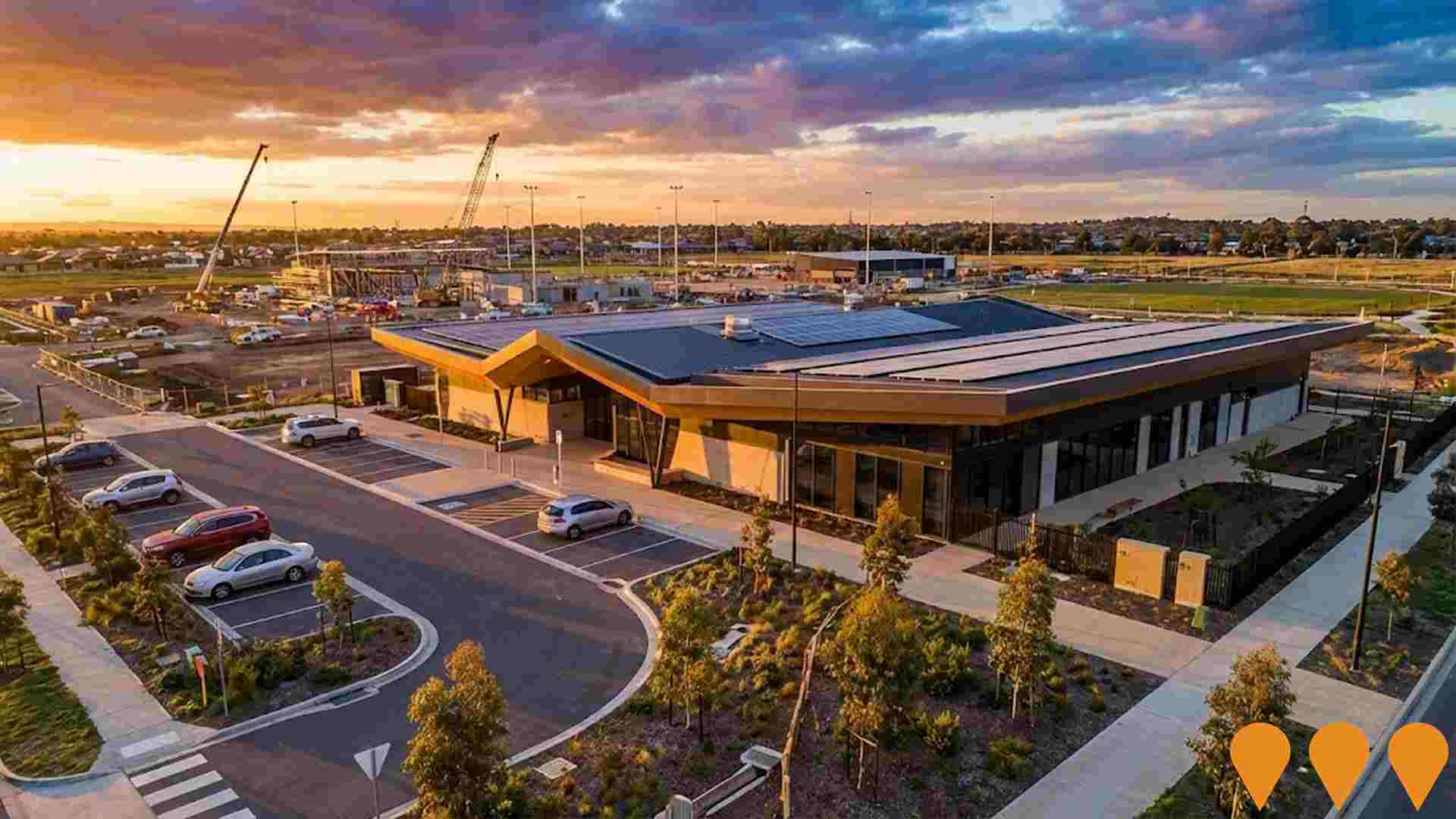
Wyndham Regional Stadium Precinct
63-hectare masterplanned precinct in Tarneit incorporating a proposed 15,000-seat multi-purpose stadium (currently on hold), completed Ironbark Fields sports complex, future residential community of approximately 800 lots, commercial and business hub, extensive parkland and community facilities. The stadium component has been placed on hold indefinitely following the surrender of Western United FC's A-League licence in August 2025. Council is now reviewing alternative options for the site while continuing to deliver non-stadium elements.
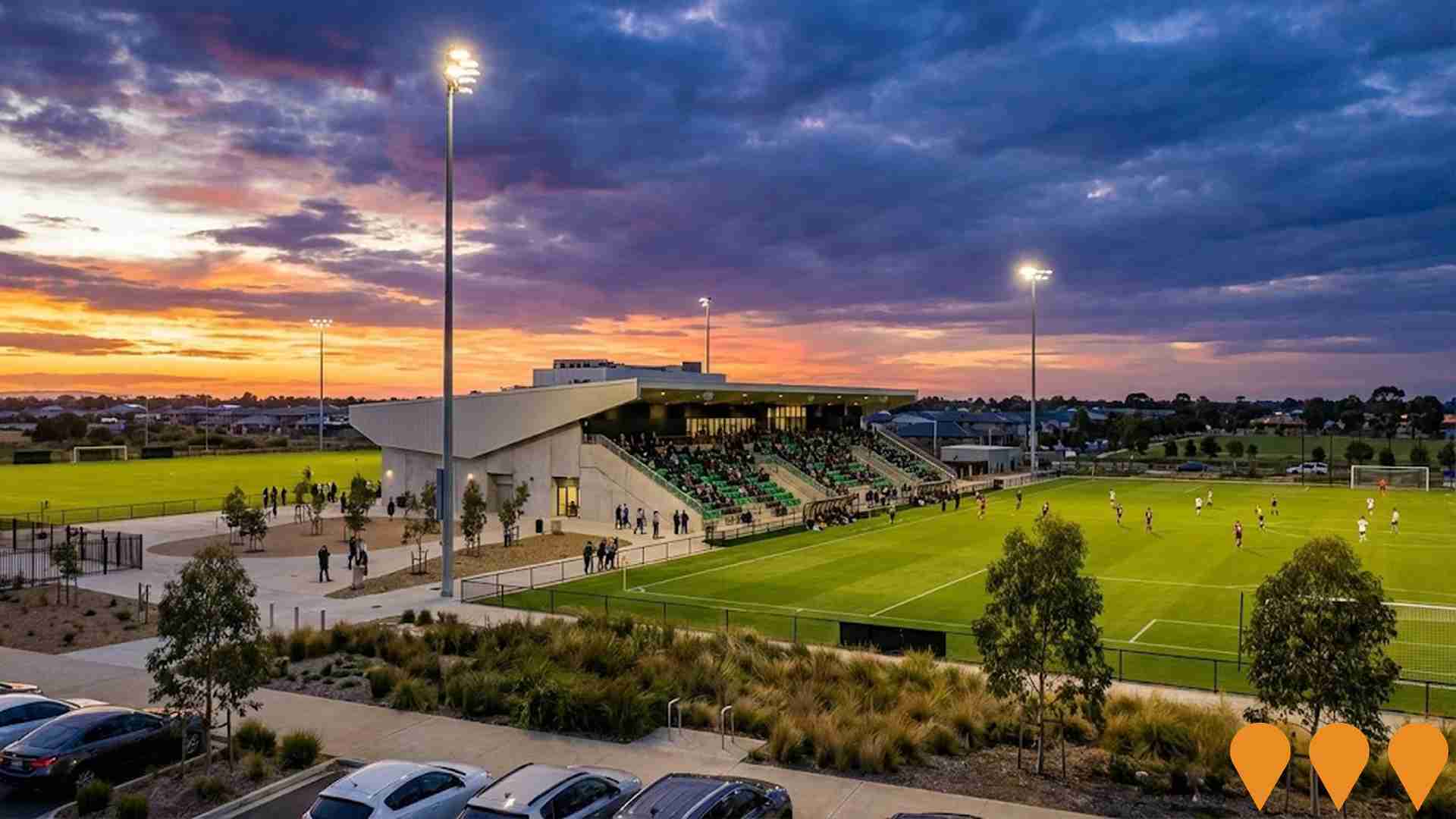
The Grove Tarneit
A 167-hectare masterplanned community bordered by Davis Creek and Werribee River, offering homes for over 2,600 families with green spaces, amenities, and a planned town centre. The project includes Karwan Primary School, Brinbeal Secondary College, wetlands, sporting facilities, and a new railway station opening in 2026.
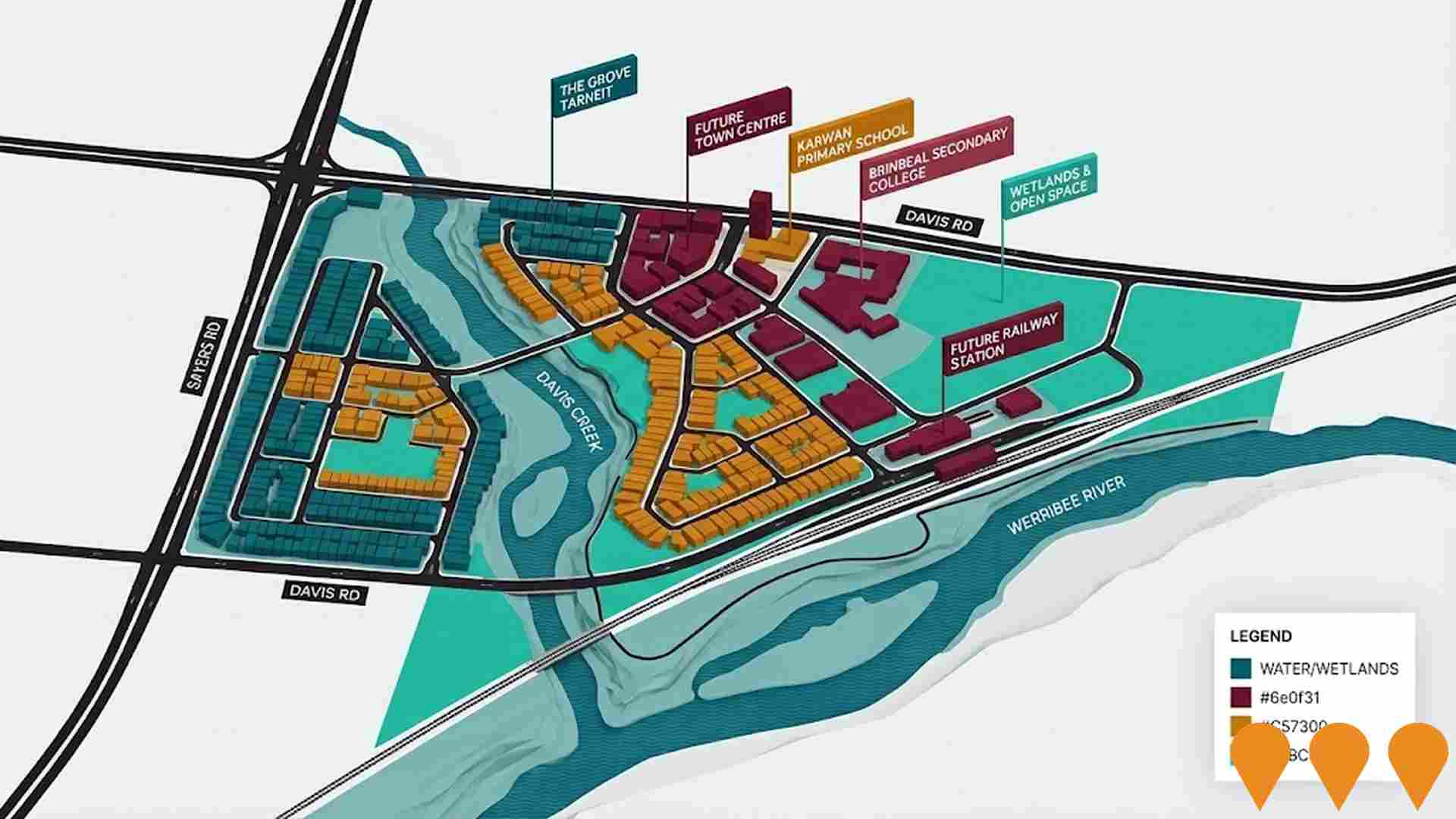
Tarneit North Community Precinct
Multi-stage community precinct development including the completed Bembit Bag-rook Community Centre (2022) and the ongoing construction of Polly Parade Reserve. The reserve features soccer fields, cricket oval, tennis courts, sports pavilion, children's playground, BBQ areas, and walking paths. Stage 1 facilities completed during 2024-2025, with Stage 2 sports pavilion construction commencing mid-2025.
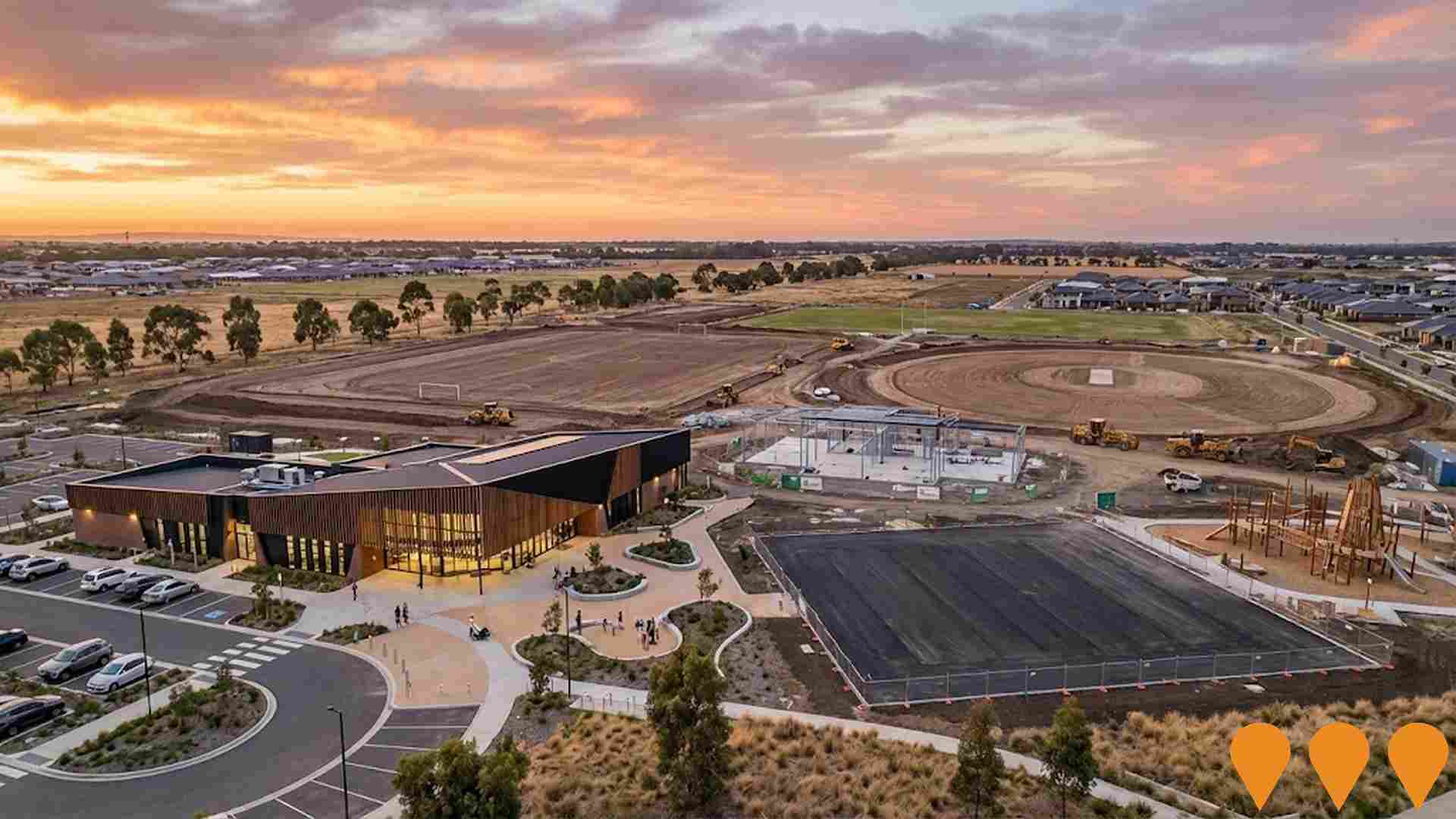
Fortitude Drive Reserve
Two-stage development of an athletics facility with supporting infrastructure. Stage One includes athletics facility, car park, play space, grassed multi-use courts, landscaping, shelter, BBQ and picnic facilities, circuit track, path network, and lighting. Stage Two will feature a sports pavilion with social room, change rooms, storerooms, and kiosk. Located adjacent to future Truganina North Secondary College.
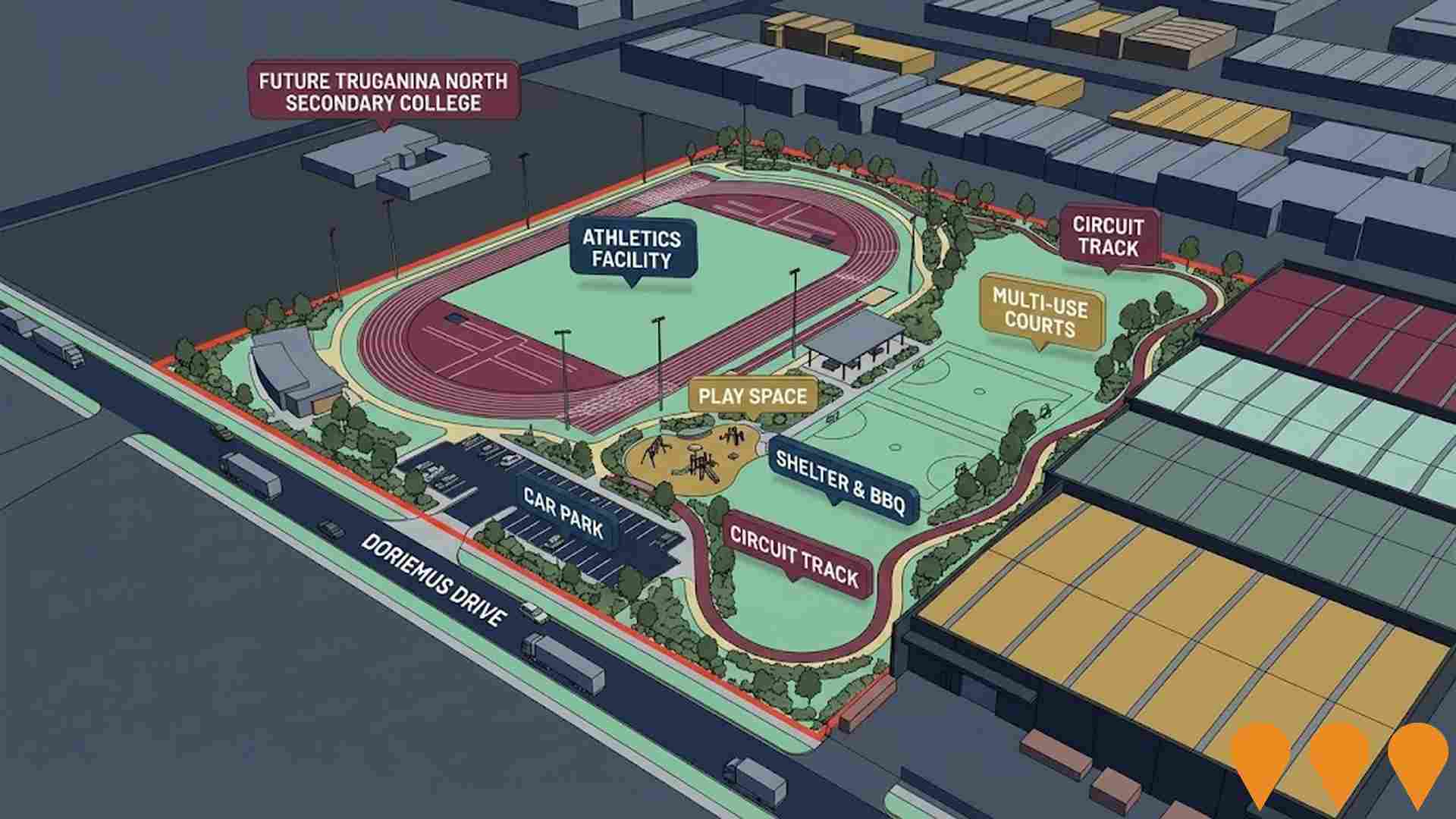
Employment
Tarneit - North ranks among the top 25% of areas assessed nationally for overall employment performance
Tarneit - North has a highly educated workforce with professional services well represented. The unemployment rate in June 2025 was 2.8%.
Employment growth over the past year was estimated at 4.8%. As of that date, 6,630 residents were employed, with an unemployment rate of 1.8% below Greater Melbourne's rate of 4.6%, and workforce participation at 73.6% compared to Greater Melbourne's 64.1%. Dominant employment sectors include transport, postal & warehousing, health care & social assistance, and retail trade. Transport, postal & warehousing shows particularly high concentration, with levels at 3.3 times the regional average.
Conversely, education & training has lower representation at 4.4% versus the regional average of 9.2%. Employment opportunities locally may be limited, as indicated by Census data on working population vs resident population. Between June 2024 and June 2025, employment levels increased by 4.8%, labour force by 5.7%, resulting in unemployment rising by 0.8 percentage points. In contrast, Greater Melbourne experienced employment growth of 3.5% and labour force growth of 4.0%, with a 0.5 percentage point rise in unemployment. Jobs and Skills Australia's national employment forecasts from May 2025 project national employment expansion by 6.6% over five years and 13.7% over ten years, but growth rates vary significantly between industry sectors. Applying these projections to Tarneit - North's employment mix suggests local growth of approximately 6.5% over five years and 13.4% over ten years.
Frequently Asked Questions - Employment
Income
The area exhibits notably strong income performance, ranking higher than 70% of areas assessed nationally through AreaSearch analysis
Tarneit - North had a median taxpayer income of $58,026 and an average of $67,060 in the financial year 2022. This was slightly above national averages, contrasting with Greater Melbourne's median income of $54,892 and average income of $73,761. By September 2025, based on a 12.16% growth since 2022, estimated incomes would be approximately $65,082 (median) and $75,214 (average). According to Census 2021 data, Tarneit - North's household, family, and personal incomes ranked between the 72nd and 78th percentiles nationally. Income distribution showed that 48.6% of residents fell within the $1,500-$2,999 range, consistent with regional trends at 32.8%. High housing costs consumed 19.7% of income, but strong earnings placed disposable income at the 73rd percentile nationally. The area's SEIFA income ranking placed it in the 6th decile.
Frequently Asked Questions - Income
Housing
Tarneit - North is characterized by a predominantly suburban housing profile, with ownership patterns similar to the broader region
Tarneit - North's dwelling structure, as per the latest Census, consisted of 99.2% houses and 0.8% other dwellings (semi-detached, apartments, 'other' dwellings). This compares to Melbourne metro's 88.1% houses and 12.0% other dwellings. Home ownership in Tarneit - North was at 3.7%, with the remaining dwellings either mortgaged (64.8%) or rented (31.5%). The median monthly mortgage repayment in the area was $2,065, above Melbourne metro's average of $1,924. The median weekly rent figure was recorded at $391, compared to Melbourne metro's $370. Nationally, Tarneit - North's mortgage repayments were significantly higher than the Australian average of $1,863, while rents exceeded the national figure of $375.
Frequently Asked Questions - Housing
Household Composition
Tarneit - North features high concentrations of family households and group households, with a higher-than-average median household size
Family households account for 87.6 percent of all households, including 60.2 percent couples with children, 18.3 percent couples without children, and 7.0 percent single parent families. Non-family households constitute the remaining 12.4 percent, with lone person households at 7.8 percent and group households comprising 4.6 percent of the total. The median household size is 3.4 people, which is larger than the Greater Melbourne average of 3.1.
Frequently Asked Questions - Households
Local Schools & Education
Tarneit - North shows strong educational performance, ranking in the upper quartile nationally when assessed across multiple qualification and achievement indicators
Tarneit - North's educational attainment significantly exceeds national and regional averages. Among residents aged 15 and above, 49.7% hold university qualifications, compared to 30.4% nationally and 32.0% regionally. Bachelor degrees are the most common at 28.4%, followed by postgraduate qualifications (18.9%) and graduate diplomas (2.4%). Vocational credentials are also prevalent, with 27.0% of residents holding such qualifications - advanced diplomas at 15.0% and certificates at 12.0%.
Educational participation is high, with 37.6% of residents currently enrolled in formal education. This includes 14.2% in primary education, 5.9% in tertiary education, and 4.7% pursuing secondary education. Tarneit - North's five schools have a combined enrolment of 752 students as of the latest data. The area demonstrates above-average socio-educational conditions with an ICSEA score of 1064. The educational mix includes three primary and two K-12 schools. Local school capacity is limited, with 4.9 places per 100 residents compared to the regional average of 18.4, indicating that many families may travel to nearby areas for schooling.
Frequently Asked Questions - Education
Schools Detail
Nearby Services & Amenities
Transport
Transport servicing is high compared to other areas nationally based on assessment of service frequency, route connectivity and accessibility
Tarneit - North has 19 active public transport stops offering a mix of train and bus services. These stops are served by 13 routes, collectively facilitating 11,373 weekly passenger trips. Transport accessibility is rated as limited, with residents typically located 941 meters from the nearest stop.
Services average 1,624 trips daily across all routes, equating to around 598 weekly trips per individual stop.
Frequently Asked Questions - Transport
Transport Stops Detail
Health
Tarneit - North's residents boast exceedingly positive health performance metrics with very low prevalence of common health conditions across all age groups
Tarneit - North demonstrates excellent health outcomes with very low prevalence of common health conditions across all age groups.
The rate of private health cover is approximately 52%, which is higher than the average SA2 area (~8,026 people). Asthma and diabetes are the most prevalent medical conditions in the area, affecting 3.3% and 2.8% of residents respectively. Overall, 90.7% of residents report being completely clear of medical ailments compared to 79.2% across Greater Melbourne. The proportion of residents aged 65 and over is 2.0% (314 people), lower than the 8.3% in Greater Melbourne. Health outcomes among seniors are strong, mirroring the general population's health profile.
Frequently Asked Questions - Health
Cultural Diversity
Tarneit - North is among the most culturally diverse areas in the country based on AreaSearch assessment of a range of language and cultural background related metrics
Tarneit-North has a population that is highly diverse culturally, with 68.9% born overseas and 79.5% speaking languages other than English at home. The predominant religion in Tarneit-North is Hinduism, practiced by 31.1%, compared to 15.7% across Greater Melbourne. In terms of ancestry, the top groups are Other (39.1%), Indian (29.7%), and English (7.3%).
Notably, Samoan (2.2%) and Filipino (3.2%) groups are overrepresented in Tarneit-North compared to regional averages of 1.0% and 3.1%, respectively.
Frequently Asked Questions - Diversity
Age
Tarneit - North hosts a very young demographic, ranking in the bottom 10% of areas nationwide
Tarneit-North's median age in 2021 was 30 years, which is younger than Greater Melbourne's average of 37 and Australia's median of 38. Compared to Greater Melbourne, Tarneit-North had a higher proportion of residents aged 35-44 (27.0%) but fewer residents aged 55-64 (3.1%). This concentration of 35-44 year-olds was above the national average of 14.2%. Post-2021 Census data showed that the 5-14 age group grew from 16.2% to 20.6%, while the 35-44 cohort increased from 22.9% to 27.0%. Meanwhile, the 25-34 cohort declined from 28.3% to 20.1% and the 0-4 group dropped from 13.5% to 11.2%. By 2041, demographic modeling suggests that Tarneit-North's age profile will change significantly, with the 35-44 age cohort projected to expand substantially by 5,989 people (145%), from 4,141 to 10,131.
